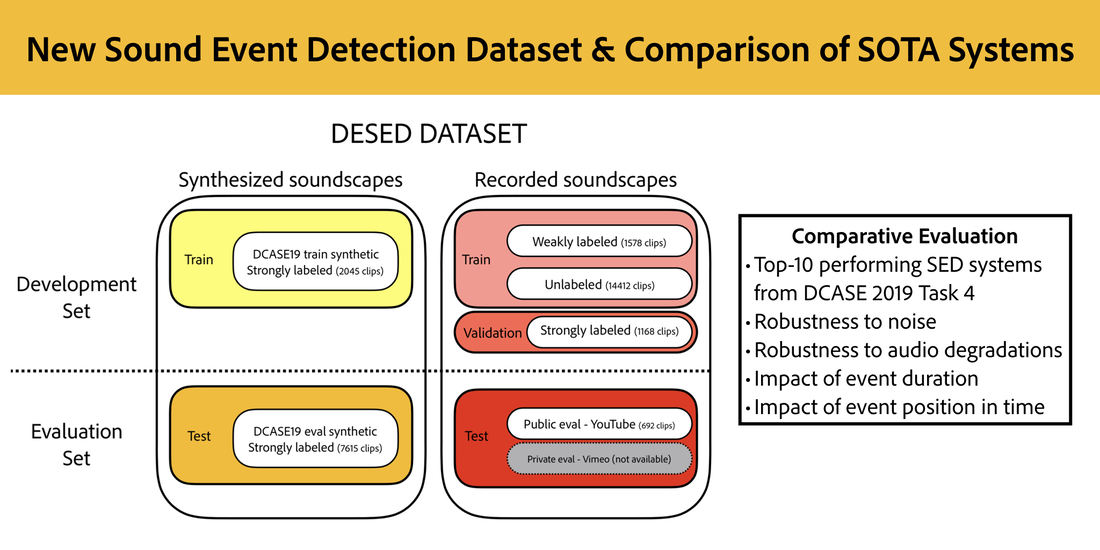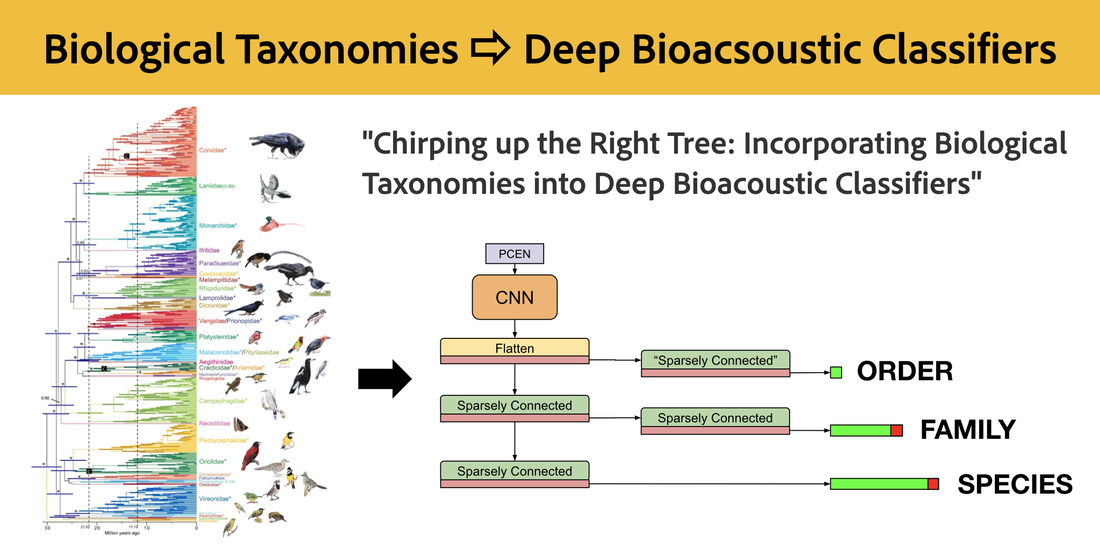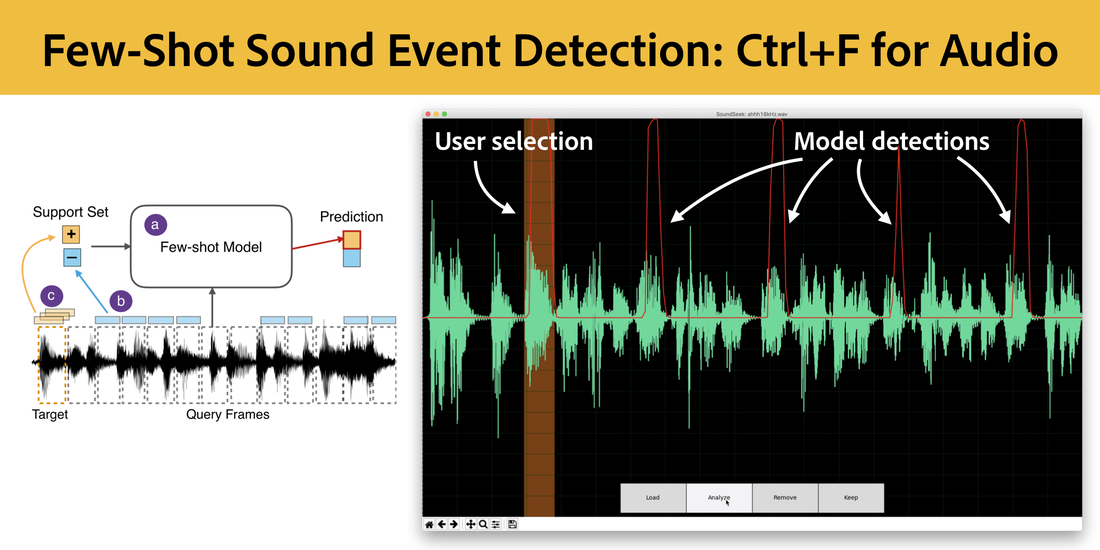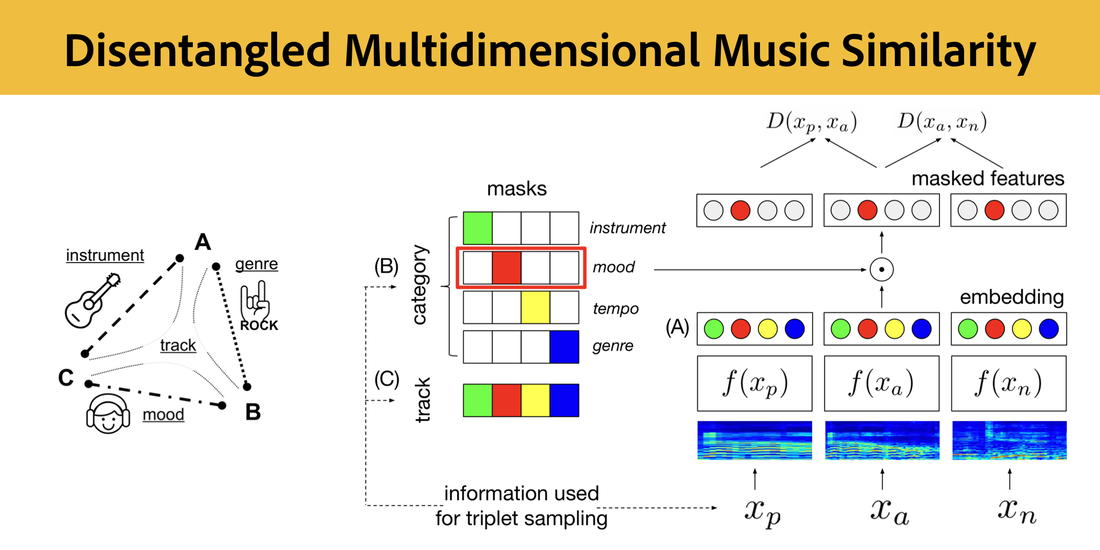New Dataset: DESED (Domestic Environment Sound Event Detection)
- Dataset website: https://project.inria.fr/desed/
- Includes both recorded and synthesized soundscapes
- Includes isolated sound events allowing users to generate new data using Scaper
Sound Event Detection in Synthetic Domestic Environments
R. Serizel, N. Turpault, A. Shah, J. Salamon
In IEEE International Conference on Acoustics, Speech, and Signal Processing (ICASSP), Barcelona, Spain, May 2020.
[IEEE][PDF][BibTeX][Copyright]




 RSS Feed
RSS Feed
